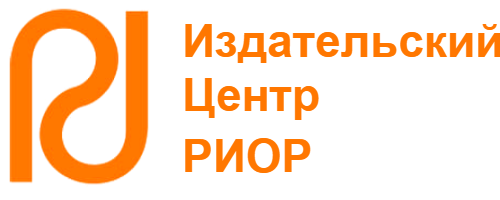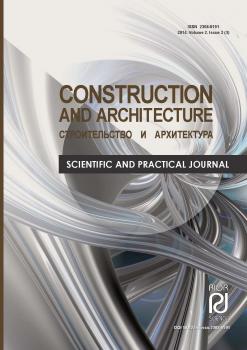Russian Federation
Russian Federation
Subject of the study: This article explores modern methods of technical operation of building engineering networks, problems faced by operating organizations and possible ways to solve them out in the future using BIM technologies. Purpose: Setting the concept problem of the technical operation of buildings and solving it by different way using modern BIMtechnologies. Considering the benefits of this approach. Materials and methods: Information and materials provided by manufacturers of automated dispatch and management systems, as well as software by Autodesk, were used for the present research. Results: The concept of using BIMtechnologies for objects of the capital constructions at the operating stage was stated by the authors. Conclusions: The main advantages of the proposed concept are given over the existing approaches.
building engineering systems, the concept uses, residential buildings, building's life cycle, application of BIM technologies
INTRODUCTION
The technical operation of buildings and facilities is a set of measures aimed at ensuring the normative life of the property.
The operating organization faces a number of tasks, from which it is possible to distinguish the following: the correct use of the building's engineering systems, operation and overhaul of the building.
Automated methods of collecting and processing data on the physical parameters of these systems are currently being used to properly use engineering systems.
Exploitation and overhaul is the most expensive stage of the building's life cycle, accounting for approximately 70% of all costs during its existence. In our country, exploiting organizations inherited a huge housing stock, previously almost entirely owned by the state. Now it, being already in different forms of ownership, requires constant maintenance and overhaul. The situation is complicated by the fact that in the last thirty years, during the so-called "transitional period", almost no major repairs to residential buildings have been carried out, and in most cases technical documentation for buildings is partially or completely absent.
LITERATURE REVIEW
Professional real estate management provides an opportunity to optimize the costs of operating and repairing facilities, therefore, in order to improve the efficiency of the building's operation, the information modeling technology of capital construction, repair and reconstruction facilities is now increasingly being used in order to improve the efficiency of the building's operation.
This approach, while requiring capital investment, may ultimately reduce labour, financial and time resources, thereby increasing the efficiency of the operating organizations.
MATERIALS AND METHODS
According to the authors, the way to develop the application of BIMtechnologies for professional property management in our country can be formalized as a concept, and highlight the main advantages of this approach.
The essence of our concept is to integrate time-changing engineering systems into an operating information model to ensure access to the necessary information about engineering equipment and systems through web applications. The use of a rich information model is expected in various operating organizations involved in the maintenance of buildings. This approach is designed to make it easier for exploiting organizations to achieve their objectives and to simplify their work.
The main advantages of the concept are:
Current electronic technical documentation, which is accessed through web applications for all participants in the operation stage,
Controlling the building's engineering systems in real time by employees of operating companies;
The ability to issue a task for repairing or replacing certain equipment online;
Remotely monitoring the procedure of necessary equipment repair or replacement by operating company staff;
Visual representation of technological equipment locations and navigation of the building;
Controlling changes during process of equipment repair/replacement/installation/demolition at object operation time.
Results
The concept uses information models of capital construction facilities, as the design of such facilities provides the possibility of more complete saturation of models with the necessary information about the building and engineering equipment, and the model itself is more detailed in comparison with the models created during the overhaul.
The system for integrating the physical parameters of engineering networks into the building operating model can be implemented via the integration of various tools and services, such as:
- Autodesk A360 for cooperative work of various structural departments, for example maintenance and operations department and supply department;
-Data repositories for storing and viewing information
-Messengers for communication between different stakeholders in the process while using the information model used;
-SCADA systems to obtain engineering equipment parameters from existing facilities at the site.
The following tasks will be solved out by the present concept development:
-Simplifying the maintenance of buildings during operation;
-Ensure that all physical changes made during the building operation are under control;
-Ability to get real information about engineering equipment of the object via controlling the technical parameters by the operating organization;
-Accelerate the process of repairing or replacing equipment by remotely monitoring the equipment parameters and the operational assignment of maintenance tasks;
-ability to get all the necessary data for repair or replacement without the use of specialized software.
Conclusions
The development of the real estate management market requires to applicate modern methods and develop of new ones. In the framework of the present concept, it is possible to significantly improve operating organizations efficiency and quality of works.
1. Shilov L., Evtushenko S., Archipov D., Shilova L. The prospects of information technology using for the analysis of industrial building defects // (2021) IOP Conf. Series: Materials Science and Ebgineering 1030 (1) 012039. DOI:https://doi.org/10.1088/1757-899X/1030/1/012039
2. Shilova L.A. Information support for the management of life support facilities, taking into account the criteria of engineering and functional stability in case of an emergency / Information Resources of Russia, 2014, No. 6 (142), p. 24-27.
3. Shilova L.A., Shilov L.A. Approach to the life cycle management of a construction site based on BIM technologies / Volga Science and Technology Gazette, 2019, No. 2, S. 86.
4. Yevtushenko S.I., Starchy T.A., Starchy M.P., Chutchenko I.A. Information technology in the survey of industrial buildings // Construction and architecture. 2017, 5, No. 1, p. 65-71. DOI:https://doi.org/10.12737/25113
5. Yevtushenko S.I., Shilova L.A., Ulesikova E.S., Kuchumov M.A. Information modeling of the subway tunnel with anti-vaccination measures / Science and Business: Development Paths, 2019, No10 (100), S. 29-35.
6. Anokhin P.K. Cybernetics of Functional Systems. / Moscow: Medicine Publishing House, 1998. 397 c.
7. Vasilyev V.R. Contextual visualization of spatial data 2004.
8. Volkov, A.A. Cybernetics of construction systems. 2017. № 9. S. 4-7.
9. Volkov, A.A. Smart City: Converged Socio-Cyberphysical Complex / Industrial and Civil Construction. - 2018 - No9. - page 4-11.
10. Vyatkin S.I. Geometric modeling and visualization of functionally defined objects / Autometry. 1999. № №6. C. 84-92.
11. Grakhov V.P. , Kislyakova Yu.G., Khudyakova V.V. General Plan as a strategy of socio-economic development of the territory / Volga Scientific Gazette. 2014. № 34 (№6).
12. Chelyshkov, P.D. Distributed modeling of building systems through cyberphysical integration / Industrial and civil construction. - 2019. - No9. - S. 12-17



















